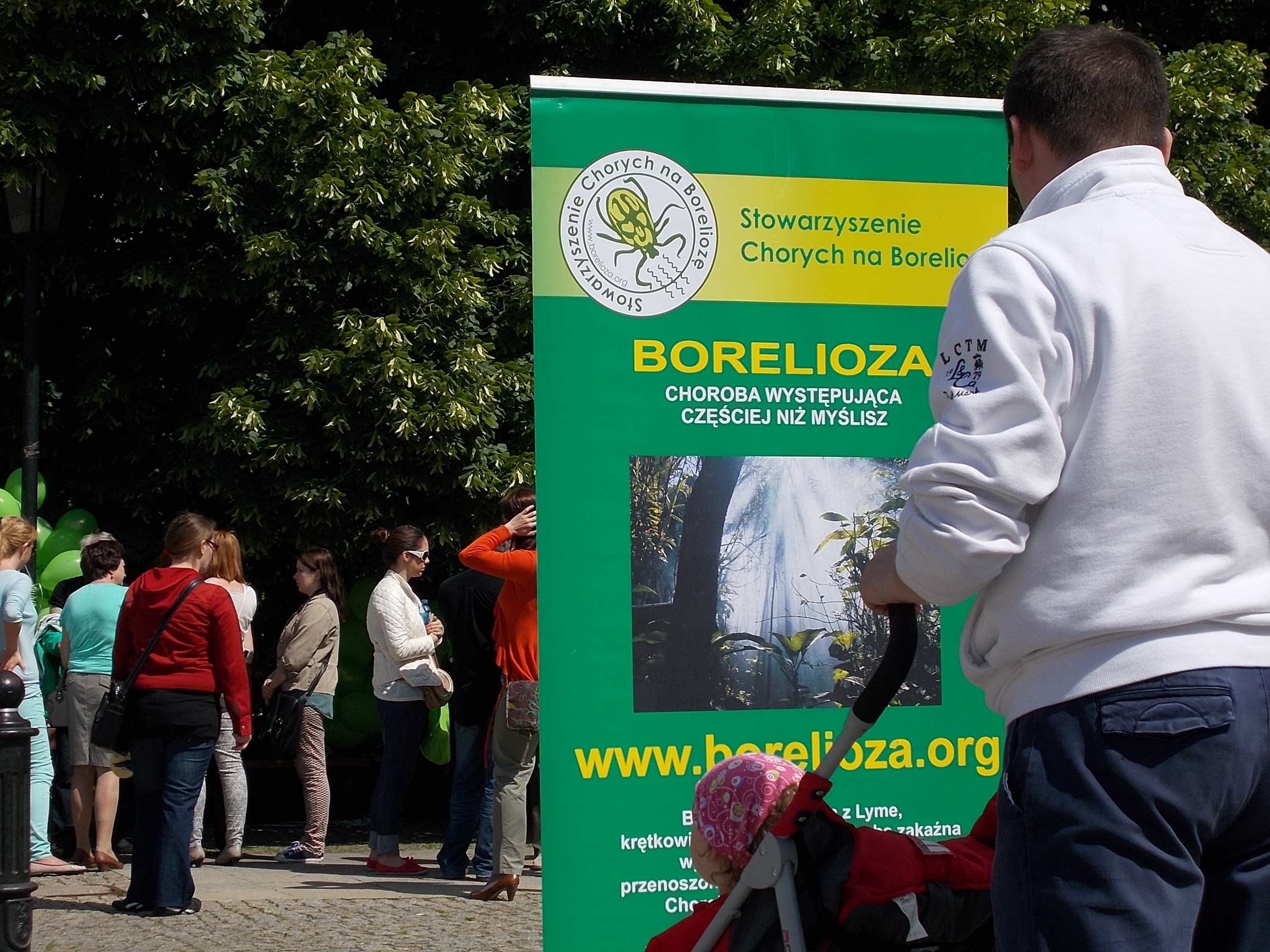Patients, carers and friends of sufferers - we are meeting in the centre of the capital city to spread reliable knowledge about Lyme and tick-borne diseases, to show solidarity with sufferers in Poland and worldwide and to reiterate our demands for improvements in diagnosis and treatment 1TP5WeWantTreatmentNotLyme!
more information: https://www.facebook.com/event
On-site contact: Rafal Reinfuss, tel. 664 925 003 (President of the Lyme Disease Association)
Lyme disease is a bacterial disease transmitted to humans by ticks. Early detected and adequately treated, it has a very good cure rate (with relatively simple and inexpensive therapy). Underestimated and poorly treated, however, it becomes a disease that is difficult to treat, worsens quality of life, often leads to disability and social exclusion. It is a disease that can be prevented - through education, caution and conscious avoidance of risk factors! Lyme disease is currently a neglected public health problem - in Poland and other developed countries. It is also the arena of a heated dispute between academics and doctors as to how to diagnose and effectively treat it. As a result, patients with Lyme disease and co-infections are worse off than any other patient group! Tens of thousands of people who could be healthy and fully functional are suffering unnecessarily while a few professors of infectious diseases "reassure" the public. We say ENOUGH! We want better diagnosis and effective treatment!
_
The number of people contracting Lyme disease in Poland is increasing year on year. Last year 2017, the National Institute of Public Health - National Institute of Hygiene registered another already sad record. 21,500 new cases of the disease. Lyme disease association (borreliosis.org) estimates that the actual incidence is at least three times higher. 30% ticks in large Polish cities (Warsaw, Krakow, Wrocław, Lublin) carry Borrelia spirochetes - the bacteria that cause Lyme disease. Infected ticks are found in parks, squares and home gardens. One careless walk in the grass, one picnic in the park - combined with generally low awareness and insufficient care - that's all it takes to get ill.
The first sign developing Lyme disease are usually pseudo-flu-like symptoms: fatigue, a feeling of wreckiness, muscle, bone and joint pain, headaches, apathy. Only in less than half sufferers may notice erythema migrans - a reddish, plaque-like skin lesion on any part of the body. Symptoms of this kind occurring without an identifiable cause during the period of tick activity should definitely prompt contact with a competent doctor! Only . 30% percentage of patients borreliosis is associated with a tick bite! Currently commonly used diagnostic tests are only able to detect half of the cases of the disease - therefore the diagnosis of Lyme disease should always be clinical! A competent, experienced doctor should take a detailed medical history and thoroughly evaluate the patient's condition - with reference to the results of the relevant diagnostic tests. A negative result of any of the currently available diagnostic tests does not in itself rule out the disease! The treatment of Lyme disease and coexisting tick-borne diseases is mainly based on appropriately selected antibacterial therapy, which should be adapted (in form, dosage and duration) to the patient's condition and to the stage of the disease. A one-size-fits-all therapy is not appropriate and will not be effective!
Against Lyme disease can't be vaccinated! The only fully effective way to prevent dangerous tick-borne diseases is to avoid being bitten by ticks. For more information, visit the Lyme Disease Association website: www.borelioza.org
(Press release sent by the Lyme Disease Association, photo: Lyme Disease Association)

